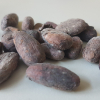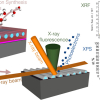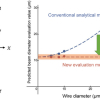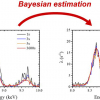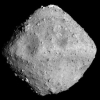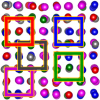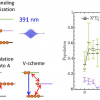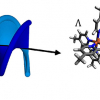
The “Ancestors Series” was created for the Cathedral beginning in the late 12th century, as part of a rebuilding programme which took place after a devastating fire in 1174. The installation of the windows continued from the late 1170s until 1220, periodically disrupted by political upheavals. However, the new study investigated a suggestion made by art-historian Madeline Caviness in the 1980s, that four of the panels installed in the 13th century are stylistically much older.
The UCL group analysed the windows using portable x-ray fluorescence (PXRF), using an approach developed for the purpose by Dr Laura Ware Adlington, who was then a PhD student at the UCL Institute of Archaeology. The study involved the first use of a specially-designed attachment for the spectrometer, a window analyser or “windolyser”, which was 3D-printed. This enabled accurate non-destructive analysis of the glass, without the need to remove physical samples from the windows.
The results showed that the glass of one of the four stylistically distinct windows, depicting the prophet Nathan, was made using earlier glass than other 13th century windows: supporting Caviness’ hypothesis. Furthermore, the results suggest that they had been present in the choir of the earlier building and survived the fire, when they were stored for future use and later adapted for the clerestory of the new building.
The team have also carried out similar studies at York Minster on disassembled panels, which allowed the researchers to develop the approach for in situ windows with the support and collaboration of the York Glaziers Trust conservators. That research included the identification of the work of different craftsmen involved in creating the Great East Window, and is in preparation for publication.
Lead author, Dr Laura Ware Adlington, said: “The inaccessibility of medieval stained glass, embedded in the walls of our cathedrals and churches, has limited our ability to learn more about them using scientific analysis. The potential of this in situ methodology using x-ray fluorescence to study medieval windows is very exciting. In our research, we found a change in the type of glass used in the Cathedral, which occurred in the late 1100s or possibly very early 1200s. We then identified the glass used to glaze Nathan as the earlier type even though he was installed in the clerestory around 1213–1220 (after the change in glass supply), lending support to Professor Caviness’ hypothesis.”
Dr Ware Adlington added: “Indeed, the agreement between her art-historical analysis and the chemical analysis was rather remarkable—down to details such as Nathan’s hat, which she identified as an early 13th-century addition, and the scientific data confirmed was made with the later glass type found at Canterbury. These findings will make us all—from art historians and scientists to members of the public visiting the Cathedral—look at the Canterbury stained glass in a whole new light.”




